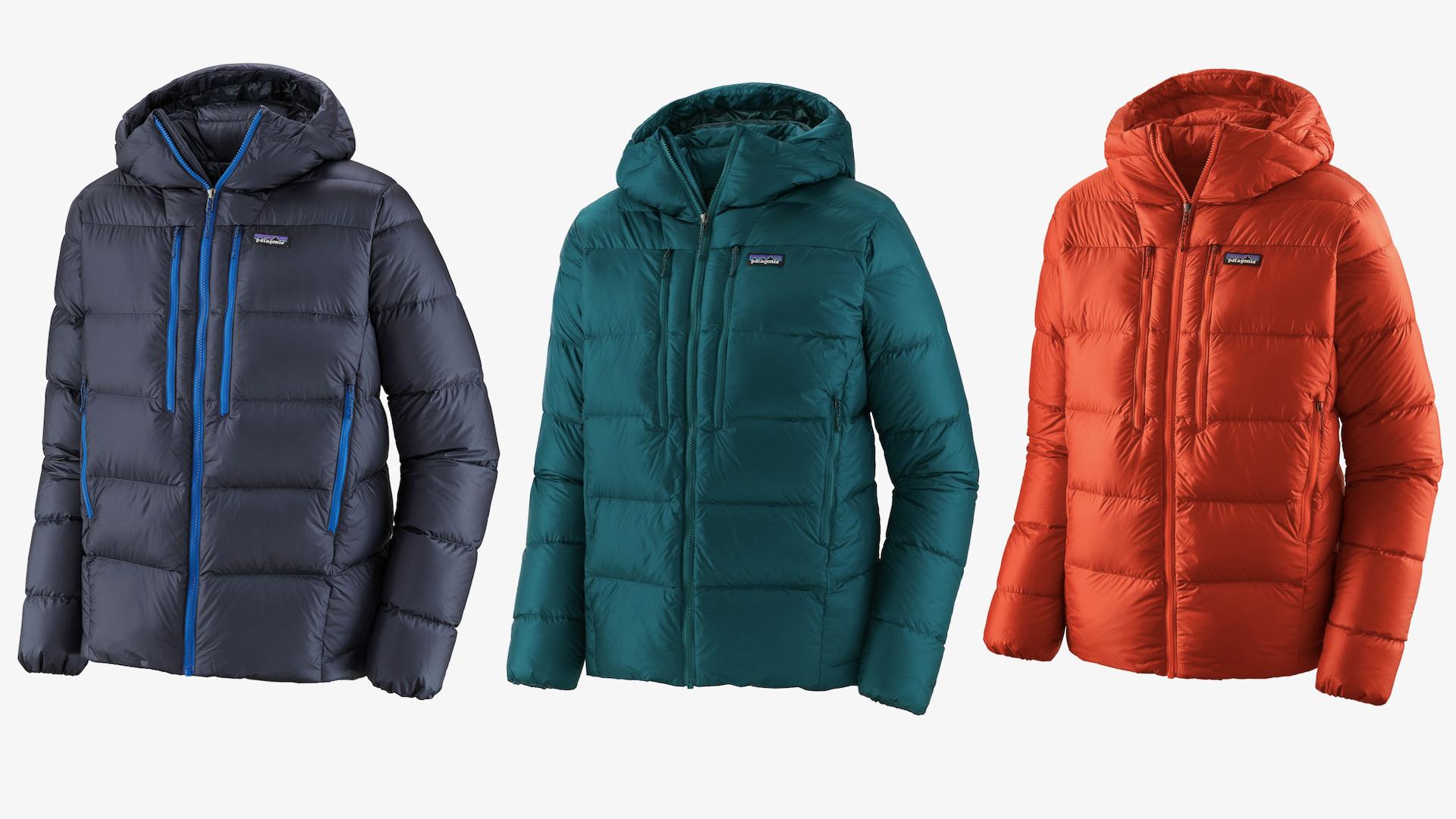Advnture Verdict
A premium down over-layering jacket primarily designed for cold and dry Alpine conditions. Seriously warm, but slightly susceptible to losing its loft in the wettest weather.
Pros
- +
Premium down fill
- +
Seriously warm
- +
Light and packable for a full-on winter belay jacket
Cons
- -
Down fill not moisture-resistant
- -
Boxy fit
- -
Expensive
You can trust Advnture
Patagonia Fitz Roy Hoody: first impressions
The Patagonia Fitz Roy Hoody’s boxy silhouette promises plenty of warmth, but clearly shows this is a jacket designed as a standalone outer layer, built for exposed belays and technical mountain use. It is certainly no lightweight, micro-baffled layering piece, and shouldn’t be compared with those styles of puffers in our best down jackets and puffers buying guide. Nor is it designed to be worn during high-output activity – it’s a jacket for hunkering down in when static.
It’s not quite expedition-level warm, as it uses a stitch-through construction rather than box-wall baffling, but the premium 800 fill power down still delivers exceptional warmth for its weight. This is a jacket primarily intended for Alpine-style climbing and mountaineering, but one that works well for any extremely cold day above the snowline.
The jacket also employs a 100% recycled ripstop nylon Pertex Quantum shell, with a DWR finish ( for more see: What is DWR?) – combining durability and toughness with commendable eco-conscious credentials, something we’ve come to expect from Patagonia.
• RRP: $399 (US) / £380 (UK)
• Sizes: Men’s XS / S / M / L / XL / XXL Women’s XS / S / M / L / XL
• Weight (men's medium): 485g / 17oz
• Fill: 800FP 90/10 Advanced Global Traceable Down (certified by NSF International)
• Colors: Smoulder Blue / Dark Borealis Green / Hot Ember / Superior Blue / Abalone Blue / Alpine Blue / Dark Ruby / Black
Patagonia Fitz Roy Hoody: on the trails
You generally buy a chunky puffer like the Patagonia Fitz Roy Hoody for one thing: instantaneous warmth. We ‘re pleased to confirm that the 800-fill power down delivers it in spades, even in temperatures double digits below zero when accounting for windchill. It’s pretty much like putting on a great big hug.
Luckily, the jacket’s other features generally stack up too. We particularly like the no-fuss cuff design, which seals out draughts but also stretches easily over winter gloves. The long, adjustable hem offers good coverage, despite lacking a scooped tail.
Pockets are well-placed and configured ideally for technical use. You get two zippered handwarmers (alas, not fleece-lined), two big Napoleon-style zippered chest pockets and a cavernous inner dump pocket on the left-hand side of the jacket. This will easily accommodate your bulkiest winter mitts and leave room to spare for an insulated flask.
The helmet-compatible hood is generously stuffed with plenty of down fill and adjusts easily via a rear drawcord, meaning you can batten down the hatches quickly and efficiently. Admittedly, the fit around the face isn’t quite as neat as some, but it is still superior to the simpler designs of less technical jackets.
Other than the serious price tag, we’re struggling to think of too many downsides – other than the caveat that applies to almost all untreated down jackets. This is that the down fill has no moisture-repellent treatment, so don’t let it get too wet. In our experience, the Fitz Roy will cope with intermittent drizzle and light precipitation, but we consciously avoided subjecting it to a full-on North Wales downpour (sse also: how to choose a down jacket or puffy jacket). Of course, on the cold but dry snow days for which it is really intended, that won’t be an issue – though that probably makes it a better option for US and European mountain ranges rather than the typically wet and windy hills of the UK.
An outdoors writer and editor, Matt Jones has been testing kit in the field for nearly a decade. Having worked for both the Ramblers and the Scouts, he knows one or two things about walking and camping, and loves all things adventure, particularly long-distance backpacking, wild camping and climbing mountains – especially in Wales. He’s based in Snowdonia and last year thru-hiked the Cambrian Way, which runs for 298 miles from Cardiff to Conwy, with a total ascent of 73,700 feet – that’s nearly 2½ times the height of Everest. Follow Matt on Instagram and Twitter.


